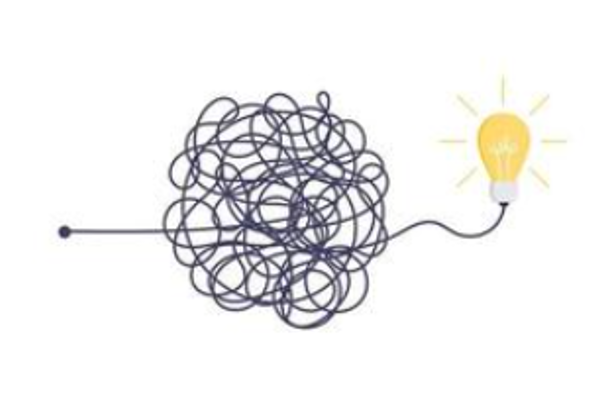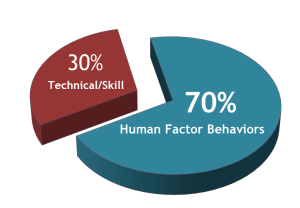
The Costly Consequences of Bad Hires
There is no doubt that hiring good people is one of the most critical challenges faced by companies today. Making a “bad” hire can be very costly. Various reports estimate the actual cost of making a bad hire. Some sources suggest anywhere from $15,000 – $30,000 to as much as $240,000.
Understanding the Root Causes of Poor Hiring Decisions
What contributes to making poor hiring decisions? There are several reasons why hiring managers may make a bad hiring decision. They may need to fill the position immediately to meet demand. The business may need consistent hiring procedures and processes. Like many, they could use the wrong hiring criteria to select people.
According to a Career Builder survey among 2,494 hiring managers and human resource professionals, 43% say they’ve made a bad hire because they felt they needed to fill the job quickly. Also, 69% of companies identify a broken interview process as having the most significant impact on the quality of their hiring.
The Path to Successful Hiring: Pre-Employment Assessment Solutions
How do you hire right the first time and stop making poor hiring decisions? The answer is to find an effective pre-employment assessment solution. Although this may be easier said than done, it includes a combination of formal tests and assessments and an excellent structured interview process for most companies. The “right” test can uncover behaviors and tendencies that won’t appear on an ordinary job application form or face-to-face interviews.
Choosing the Right Hiring Solution
What do you look for in a hiring solution? The most effective hiring tools are behavioral and are based on a job analysis with proven top performers who actually do the job.
Ease of Use: If the hiring solution is too cumbersome to administer, you aren’t likely to use it properly. Look for tools that are easy to administer and interpret.
Fast Turnaround of Results: If results take longer than an hour to receive, you run the risk of losing high-performance candidates while you’re waiting. A comprehensive hiring solution should include a pre-employment assessment, a structured interview, and a performance evaluation that will enable you to assess, confirm, and develop the best team possible.
Demonstrated Validity: Look for tools that provide content, criterion, or construct validity.
Nondiscriminatory: Choose a nondiscriminatory testing and assessment process that complies with affirmative action guidelines and policies. They should also meet all federal EEOC, ADA, and OFCCP hiring guidelines.
Cannot Be Manipulated: The assessment questions must be framed so that candidates cannot manipulate their answers by simply providing information they believe the employer wants to hear. If it is easy to differentiate between the right or wrong answer, the candidate can easily manipulate the test by choosing the one that is “right,” not necessarily the one that best describes them.
The Power of Scheig’s SelectRight™ Hiring Solution
Scheig’s SelectRight™ Hiring Solution is one of the most innovative solutions in that it is job-specific AND performance-based. Each industry’s unique test is created by analyzing the behaviors of top performers in that specific job. Then, a 20-minute assessment is constructed that builds profiles based on the ideal employee profile for that position.
The prospective new hire is judged on their suitability to a particular job and measured against people already doing that job well. This removes much of the subjectivity that’s part of the traditional hiring process while also making the test nondiscriminatory.
A Three-Part Assessment for Precision Hiring
Scheig’s SelectRight™ Hiring Solution comprises Pre-Employment Assessments and a Structured Interview Process. Each job is unique; therefore, each pre-employment assessment is job-specific. Depending on the job, it can include up to 3 assessment segments:
The Interest and Willingness Checklist: This first section identifies the applicant’s experience and the basic job requirements to ensure a match in employee and company interests.
The Self-Rating Checklist: Candidates choose character attributes from between two job-specific behaviors, the one that best describes them. Each answer is plausible, but one is better than the others.
The Critical Incidents Section: A series of multiple-choice questions involving true-to-life, on-the-job experiences encountered and resolved by superior drivers. The best candidates go through this test from correct answer to correct answer, like connecting the dots, says Scheig.
Behavioral Fit Matters Most
Generally, any job is a maximum of 30% technical, and 70% of job success comes from human factor behaviors, which is why Dr. Scheig says that “experience is not as important as some might think. There are good physicians, and there are bad physicians; both have licenses. There are good attorneys, and there are bad attorneys; both passed the bar exam. The difference between high and low performers lies in their behavioral approach to the job, which is why we say – hire for behaviors and train for the skills.”
Investing in Effective Hiring
Skills can be learned, for one thing, but finding the right fit is around 30% technical skill and 70% behavioral. And attitudes can’t be learned. Hiring the right employee is too critical to leave to chance. It has been found that 80% of all employee turnover results from poor hiring decisions.
A Smart Investment for Long-Term Success
With so many costs involved with making a bad hire, employers must find viable solutions to making sound decisions in who they hire for the job. Tools such as Scheig’s SelectRight™ Hiring Solution can have accuracy rates well over 90%. These tips in identifying the right solutions will help reduce turnover and ultimately save your business valuable time and money. Don’t hesitate to contact us to learn more about Scheig’s hiring or development solutions.



